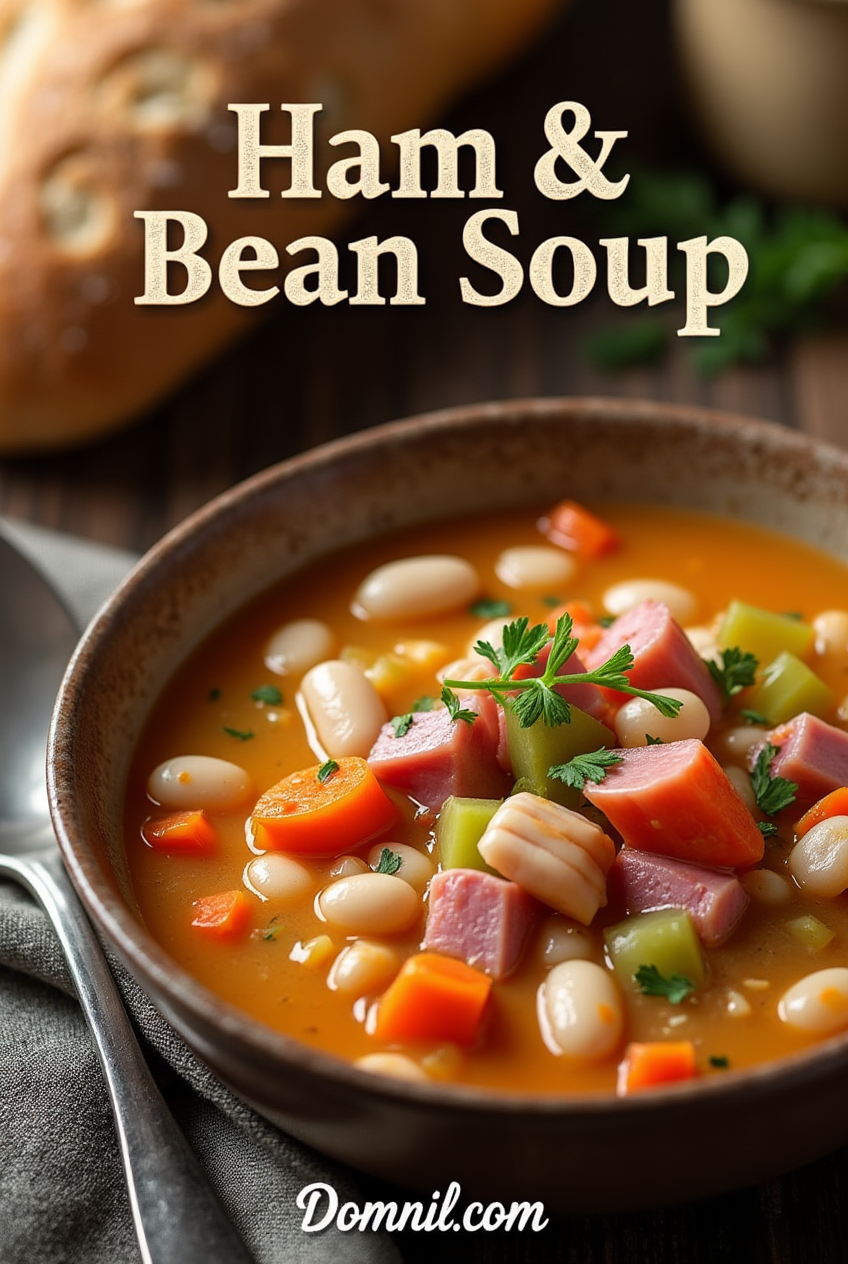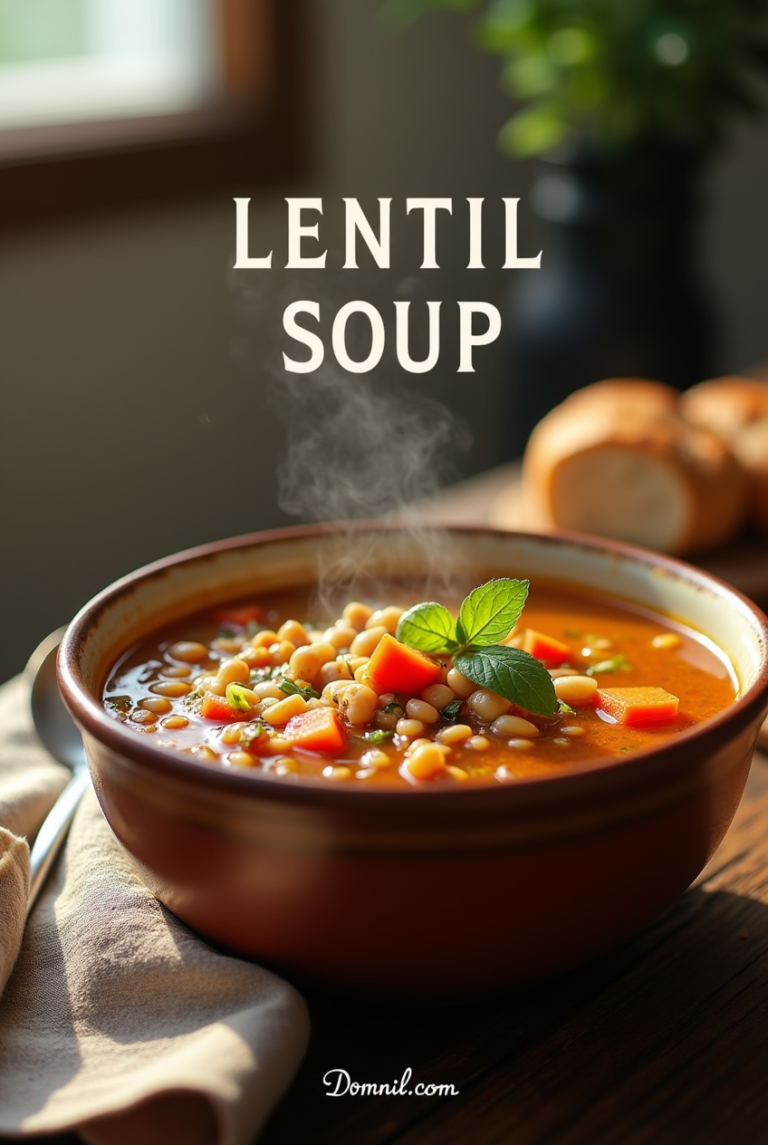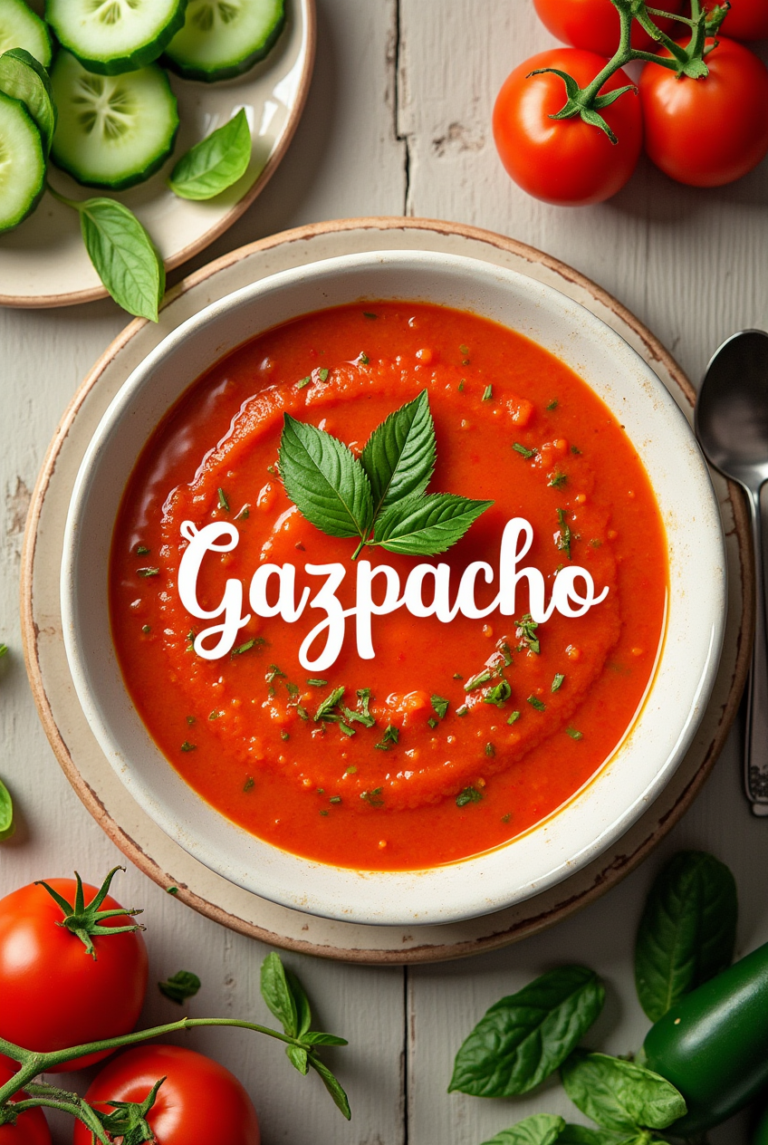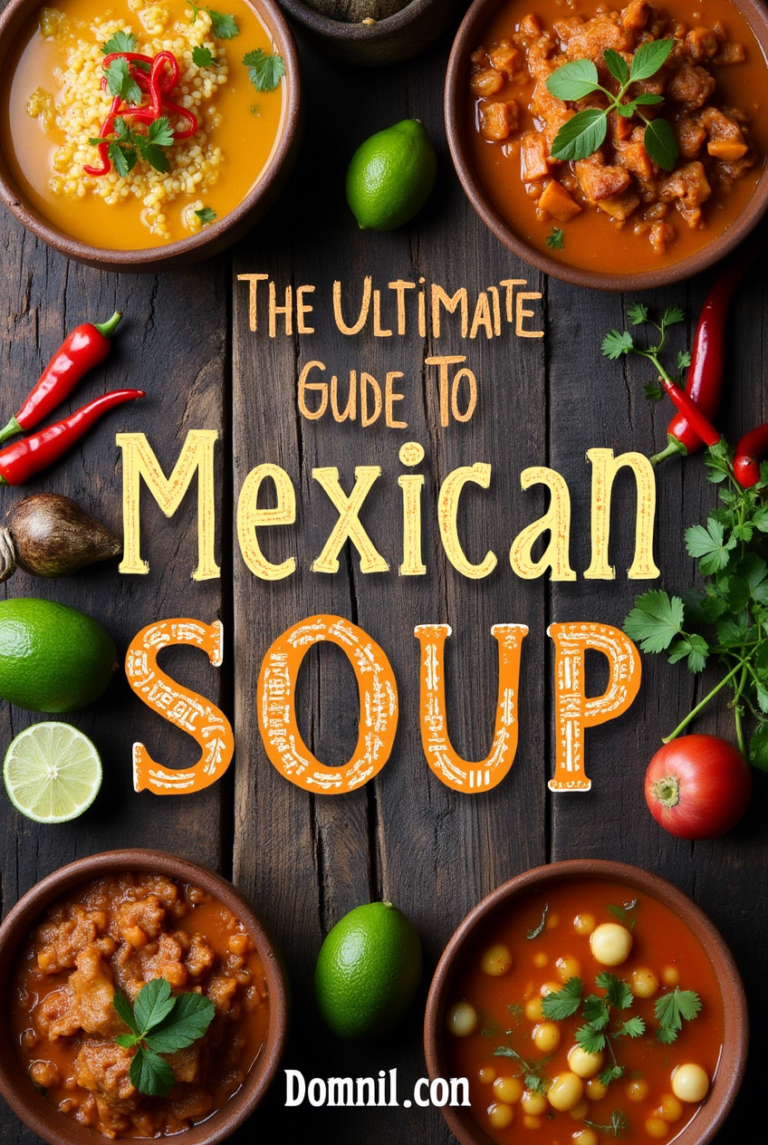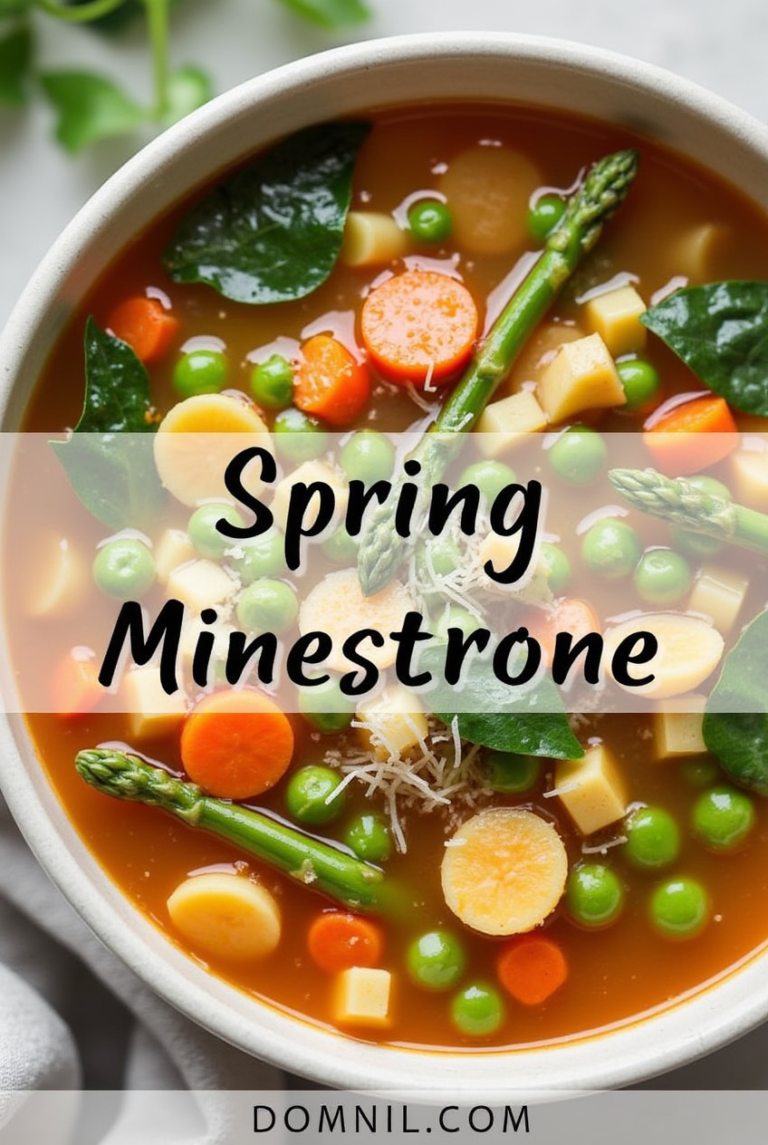Ham and Bean Soup – A Hearty and Comforting Classic
There’s nothing quite like a warm bowl of ham and bean soup on a chilly day. It’s a comfort food classic, packed with smoky ham, creamy beans, and a rich, savory broth that fills the kitchen with an irresistible aroma. Whether you’re making it from scratch with dried beans or using leftover ham from a holiday feast, this soup is a delicious and budget-friendly meal that keeps getting better with time.
But what makes this soup so special? It’s simple yet incredibly satisfying, and there are countless ways to customize it to suit your taste. In this guide, we’ll cover everything from ingredients and cooking methods to expert tips and variations.

Table of Contents
Ingredients for the Perfect Ham and Bean Soup
A great soup starts with the right ingredients. Here’s what you’ll need for a classic ham and bean soup:
Essential Ingredients:
- 1 pound dried beans (navy, great northern, or pinto beans work best)
- 1 meaty ham bone (or 2 cups diced ham)
- 1 onion, chopped
- 2 carrots, diced
- 2 celery stalks, chopped
- 3 garlic cloves, minced
- 6 cups chicken or vegetable broth
- 2 cups water
- 1 teaspoon thyme
- 1 bay leaf
- Salt and pepper to taste
Optional Ingredients for Extra Flavor:
- ½ teaspoon smoked paprika (for extra smokiness)
- 1 teaspoon Worcestershire sauce (adds umami depth)
- 1 teaspoon brown sugar (balances the flavors)
- ½ teaspoon red pepper flakes (for heat)
Best Beans for Ham and Bean Soup:
- Navy beans – small, creamy, and traditional
- Great Northern beans – slightly larger and mild in flavor
- Pinto beans – soft and slightly sweet
- Cannellini beans – larger with a smooth texture
Choosing the Right Ham for Your Soup
Ham is the star ingredient, so choosing the right type can elevate your soup.
Bone-in vs. Boneless Ham:
- Bone-in ham is best because the bone adds richness to the broth.
- Boneless ham works too, but you may need extra seasonings for depth.
Smoked vs. Fresh Ham:
- Smoked ham gives the soup a deep, rich flavor.
- Fresh ham (or country ham) is saltier and requires careful seasoning balance.
Using Leftover Ham:
If you have leftover ham from the holidays, this soup is a perfect way to use it up! Just chop it into bite-sized pieces and add it during the last 30 minutes of cooking.
Preparing the Beans for the Soup
Beans are a major component of this soup, and how you prepare them affects the final texture and flavor.
Soaking vs. No-Soak Method:
- Soaking overnight (8-12 hours): Speeds up cooking and makes beans easier to digest.
- Quick soak method: Boil beans for 2 minutes, then let them sit for an hour.
- No-soak method: Adds extra cooking time (but works fine in a slow cooker).
Canned vs. Dried Beans:
- Dried beans offer the best flavor and texture.
- Canned beans are convenient but should be rinsed well before use.
Cooking Time Considerations:
- Stovetop: 1.5 – 2 hours
- Slow cooker: 6-8 hours on low
- Instant Pot: 30-40 minutes under pressure
Step-by-Step Guide to Making Ham and Bean Soup
Step 1 – Preparing Your Ingredients
- Chop the onions, carrots, celery, and garlic.
- Rinse the dried beans and discard any debris.
- If using a ham bone, trim off any excess fat.
Step 2 – Sautéing and Building Flavor
- Heat a large pot over medium heat.
- Sauté onions, carrots, and celery until softened.
- Add garlic and cook for another minute.
Step 3 – Simmering to Perfection
- Add beans, ham bone, broth, water, thyme, and bay leaf.
- Bring to a boil, then reduce to a simmer.
- Cover and cook until beans are tender (about 1.5 – 2 hours).
Step 4 – Final Touches and Serving
- Remove the ham bone, shred any meat, and return it to the pot.
- Season with salt, pepper, and any additional spices.
- Serve hot with crusty bread or cornbread.
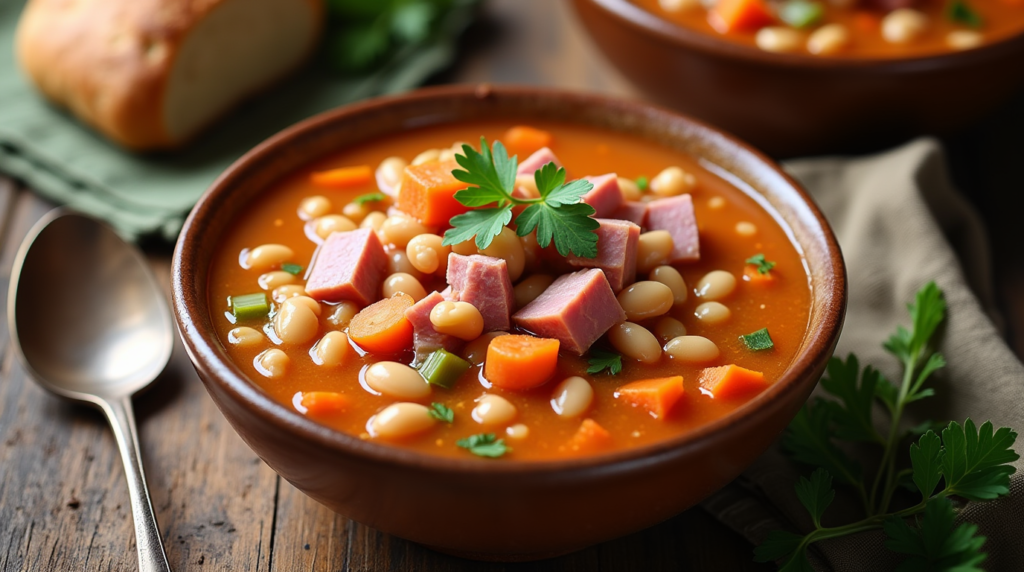
Slow Cooker vs. Stove-Top vs. Instant Pot Cooking
Ham and bean soup is incredibly versatile and can be made using different cooking methods. Each method has its pros and cons, depending on how much time and effort you want to invest.
Slow Cooker (Crockpot) Method
Pros:
✔️ Hands-off cooking—just set it and forget it.
✔️ Develops deep, rich flavors over time.
✔️ Perfect for cooking while you’re at work.
Cons:
❌ Takes 6-8 hours on low (or 4-5 hours on high).
❌ Requires pre-soaked beans for best results.
How to Make It in a Slow Cooker:
- Place all ingredients (except salt and pepper) into the slow cooker.
- Cover and cook on low for 6-8 hours or high for 4-5 hours.
- Remove ham bone, shred the meat, and return it to the pot.
- Season to taste and serve.
Stove-Top Method
Pros:
✔️ Traditional and time-tested method.
✔️ Allows for flavor adjustments throughout cooking.
Cons:
❌ Requires more attention (stirring and checking liquid levels).
❌ Longer cooking time (1.5 to 2 hours).
How to Make It on the Stove:
- Sauté the onions, carrots, celery, and garlic in a large pot.
- Add all remaining ingredients and bring to a boil.
- Reduce to a simmer and cover.
- Cook for 1.5 to 2 hours, stirring occasionally.
- Remove the ham bone, shred meat, and season.
Instant Pot (Pressure Cooker) Method
Pros:
✔️ Cooks in under 40 minutes—perfect for busy days.
✔️ No need to pre-soak dried beans.
Cons:
❌ Less time for flavors to develop naturally.
❌ Requires a natural pressure release to avoid mess.
How to Make It in the Instant Pot:
- Sauté onions, carrots, celery, and garlic using the “Sauté” function.
- Add the beans, ham bone, broth, and seasonings.
- Secure the lid and cook on High Pressure for 30-40 minutes.
- Let the pressure naturally release for 15 minutes, then manually release the rest.
- Remove the ham bone, shred meat, and stir well before serving.
Tips for Enhancing Flavor
Even a simple soup can be elevated with a few expert tips.
Best Seasonings and Spices:
- Smoked paprika – Adds a smoky depth.
- Worcestershire sauce – Enhances umami flavors.
- Bay leaves – Infuse a subtle earthiness.
- Apple cider vinegar – Brightens the soup at the end.
Adding Vegetables for Depth:
- Tomatoes – Add acidity and balance the richness.
- Potatoes – Make the soup heartier.
- Bell peppers – Introduce a slight sweetness.
How to Thicken the Soup:
- Mash some of the beans with a fork to release starches.
- Use a cornstarch slurry (mix 1 tbsp cornstarch with water and stir in).
- Simmer uncovered for 15 minutes to reduce excess liquid.
Storing and Reheating Leftovers
How Long Does It Last?
- Refrigerator: Store in an airtight container for up to 5 days.
- Freezer: Freeze in portions for up to 3 months.
How to Reheat:
- Stove: Heat over medium-low, stirring occasionally.
- Microwave: Reheat in 1-minute intervals, stirring between each.
- Slow Cooker: Reheat on low for about an hour.
Pro Tip: If the soup thickens too much, add a bit of water or broth while reheating.
Serving Suggestions
Pair your soup with the right side dish to make it a complete meal.
Best Bread Pairings:
- Crusty French bread – Perfect for dipping.
- Cornbread – Adds a Southern touch.
- Garlic bread – Enhances the soup’s savory flavors.
Side Dishes to Complement the Soup:
- Green salad – A fresh contrast to the hearty soup.
- Roasted vegetables – Add more nutrients and variety.
- Grilled cheese sandwich – Because why not?
Health Benefits of Ham and Bean Soup
Nutritional Value of Beans:
- High in fiber, keeping digestion smooth.
- Rich in plant-based protein.
- Low in fat but packed with essential vitamins.
Protein Content from Ham:
- Provides high-quality protein for muscle growth.
- Contains B vitamins like B6 and B12.
Low-Fat Substitutions:
- Use lean turkey or chicken instead of ham.
- Reduce salt if using a ham hock.
- Opt for vegetable broth to cut down on fat.
Common Mistakes to Avoid
Overcooking or Undercooking Beans:
- Always check for doneness before serving.
- If beans are too hard, they need more cooking time.
Making the Soup Too Salty:
- Rinse canned beans well before using.
- Use low-sodium broth if adding a ham bone.
- Add a potato to absorb excess salt, then remove before serving.
Fixing a Watery Soup:
- Simmer uncovered for 15-20 minutes to thicken.
- Mash some beans for a natural thickener.
Variations and Customizations
Vegetarian and Vegan Alternatives:
- Use vegetable broth instead of chicken broth.
- Swap ham for mushrooms or smoked tofu.
Spicy vs. Mild Versions:
- Add jalapeños or cayenne pepper for heat.
- Keep it mild by using sweet bell peppers instead.
Adding Different Meats:
- Try sausage for a smoky, spicy kick.
- Use chicken or turkey for a leaner option.
Frequently Asked Questions
1. Can I Make It Dairy-Free?
Yes! This soup is naturally dairy-free. Just be mindful of any store-bought broth that may contain dairy additives.
2. What Are the Best Beans to Use?
Navy, great northern, or pinto beans are best, but any beans will work.
3. How Do I Make It Less Salty?
Use unsalted broth, rinse canned beans, and avoid adding extra salt until the end.
4. Can I Use Canned Beans Instead of Dried?
Yes! Just reduce cooking time by half since canned beans are already cooked.
5. What’s the Best Way to Thicken the Soup?
Mash some beans, simmer uncovered, or use a cornstarch slurry.
Why This Recipe is a Winner
This Ham and Bean Soup is the ultimate comfort food—hearty, flavorful, and easy to make. It’s perfect for using up leftover ham, feeding a crowd, or enjoying a cozy night in. With its rich flavors and wholesome ingredients, it’s sure to become a family favorite.

